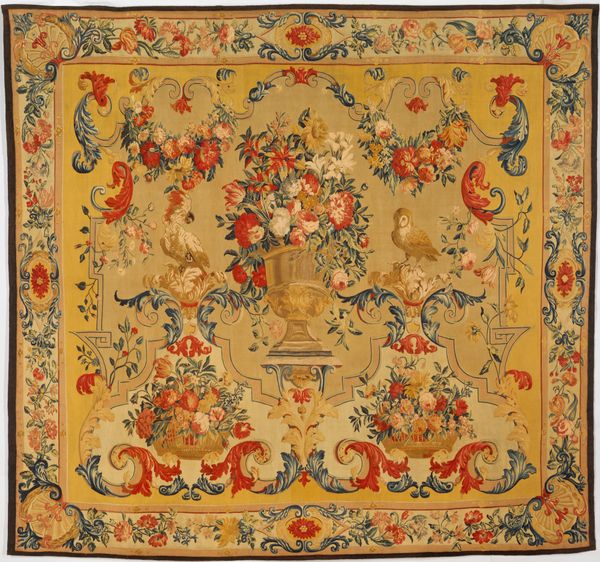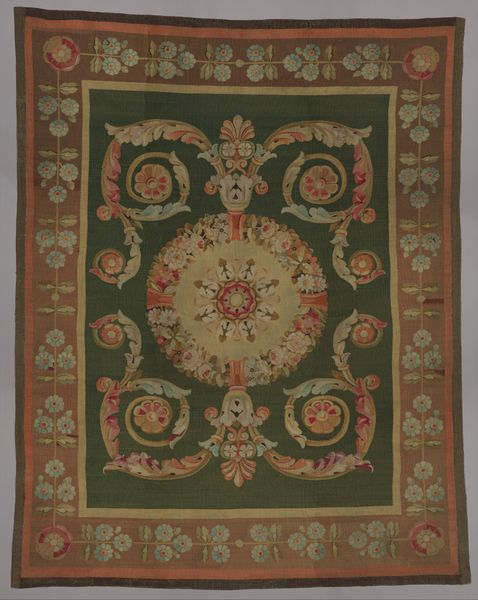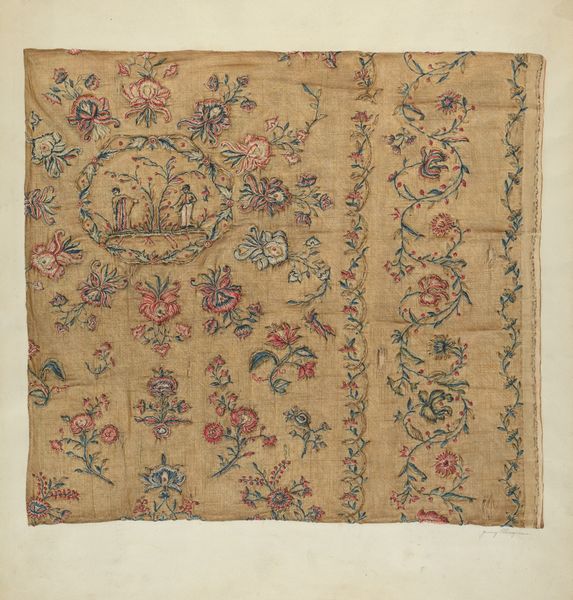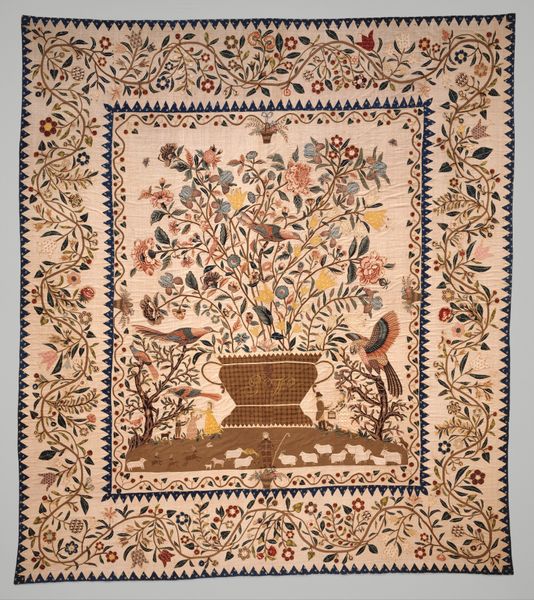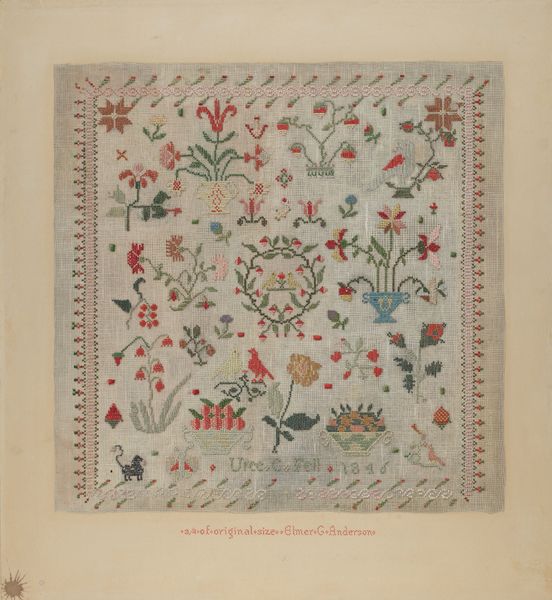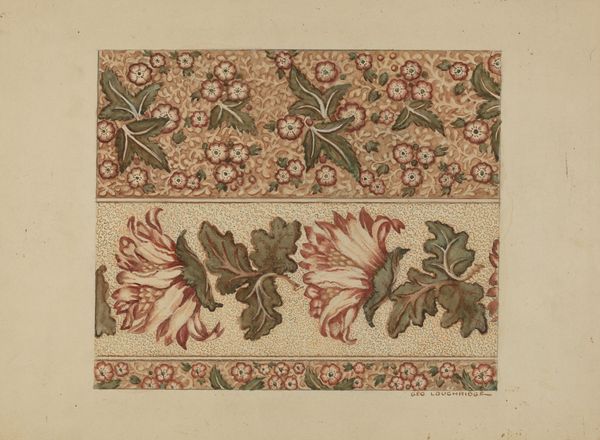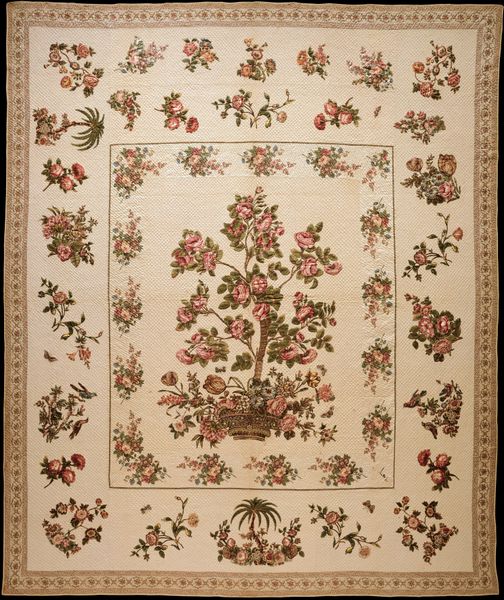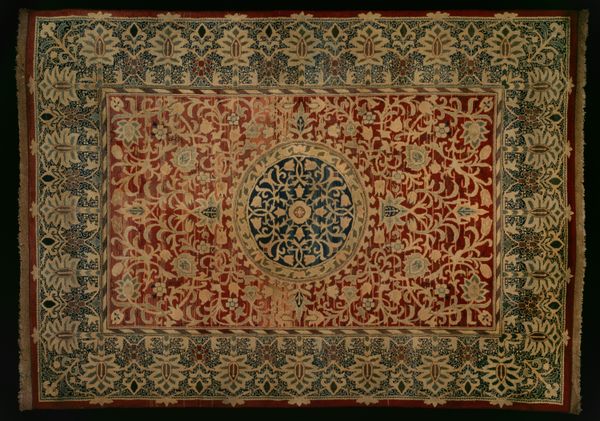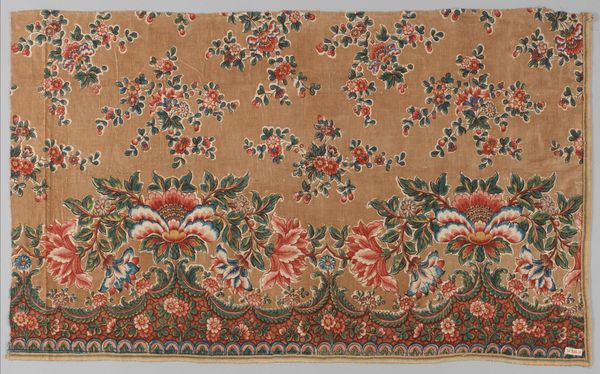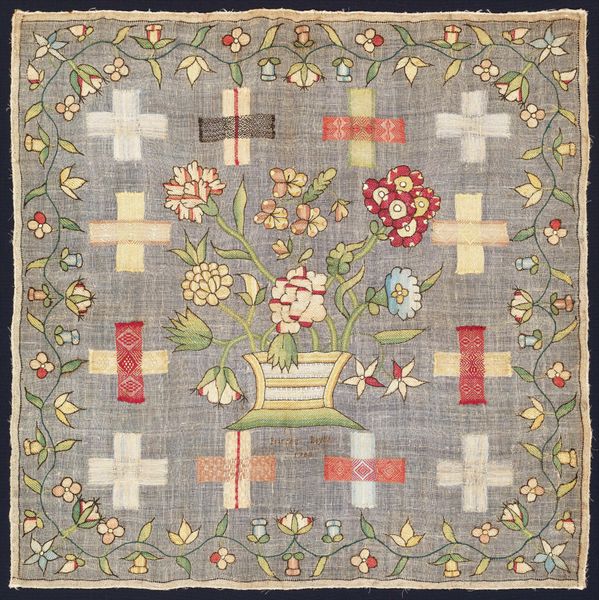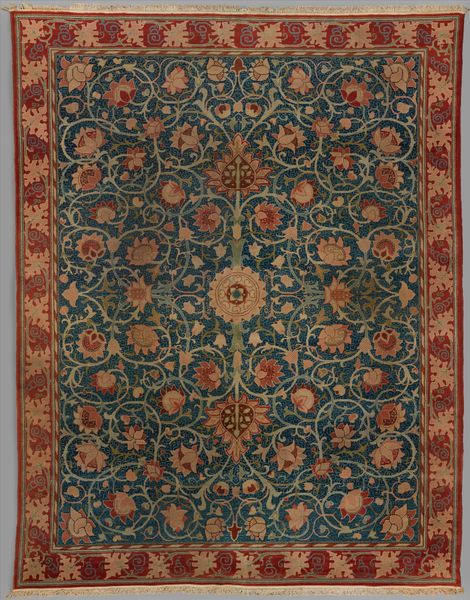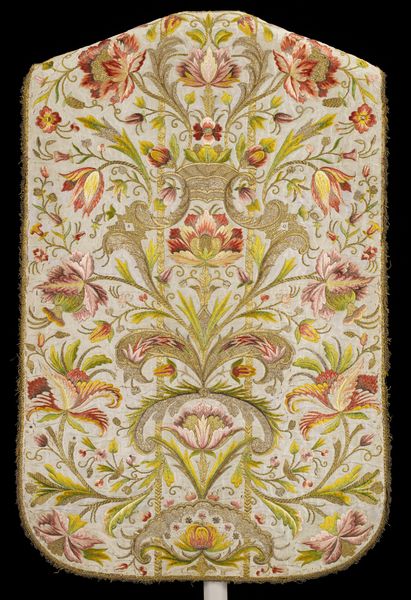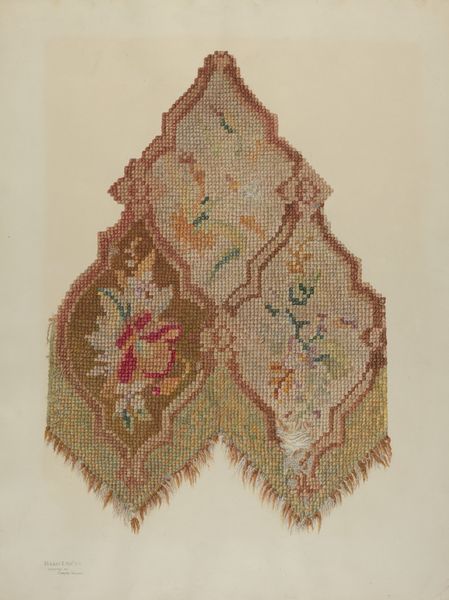
drawing, textile, watercolor
#
drawing
#
water colours
#
narrative-art
#
textile
#
watercolor
#
folk-art
#
geometric
#
decorative-art
#
watercolor
Dimensions: overall: 53.5 x 48.6 cm (21 1/16 x 19 1/8 in.)
Copyright: National Gallery of Art: CC0 1.0
Curator: I find this quilt, likely conceived around 1937, quite striking; the geometric patterns, flowers, and central eagle motif immediately speak to a time of both domesticity and national identity. Editor: Absolutely, it has this homey feel to it that belies the nationalistic undertones of its symbolism. It's a fascinating intersection of private and public spheres, particularly if you consider the gendered associations with textile work. Curator: Precisely. Textile work has often been relegated to the domestic sphere, a "feminine" craft undervalued against "masculine" fine arts. However, consider the immense labor involved here: the material sourcing, preparation, the intricate stitching. It's all skilled, demanding work. Editor: Right. Quilts like this were often made collectively, creating social networks and safe spaces for women. How might this creation, situated in the late 1930s, speak to anxieties around economic hardship, global conflict, and shifting gender roles? Curator: Well, we can start with materials. Presumably made during the Great Depression, the textiles used likely reflect resourceful repurposing, each patch with a possible story reflecting material culture and even class distinctions. Editor: The choice of imagery matters, too. The central eagle is obviously a powerful symbol of American identity, but when coupled with those domestic floral arrangements, it subtly reinforces traditional gender roles and idealized notions of home and nation. It's a soft yet assertive assertion. Curator: Assertive, indeed, which takes me back to the process. The repetitive nature of quilting itself lends time for contemplation, potentially acting as a subtle form of personal or political expression, stitched into the very fabric. Editor: So it is this interplay of labour and symbolic content—national iconography amidst domestic patterns—that I keep returning to here. I would further argue that even the watercolour of this design signifies how the boundaries of craft, folk art and traditional painting are porous. Curator: Agreed. We need to remember these items are never neutral. Investigating them through both their means of production and historical placement reveals not just beauty, but a rich narrative about individual lives woven into larger social movements. Editor: Thinking about its textures and patterns along intersectional lines helps challenge the often-binary ways in which both art and identities are understood and appreciated. Curator: Absolutely. A deeper dive into its composition highlights that this piece—much like a nation—is actually comprised of individual narratives, meticulously and creatively pieced together.
Comments
No comments
Be the first to comment and join the conversation on the ultimate creative platform.

